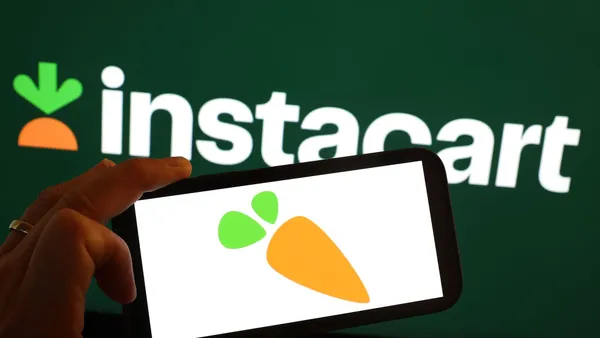One of the major challenges identified in our 2024 joint global survey with Mastercard, "The payment challenges that suppliers are facing", is how payment delays can lead to cash flow issues. In a volatile supply chain environment, enterprises of all sizes may struggle with managing payments across multiple jurisdictions, especially with longer payment cycles.
Arguably the most innovative development we’re seeing now in the payments space is the burgeoning move towards automation in digital payment systems. Payment Factories are the first step towards driving automation. While still a few years out, programmable payments where transactions and processes are automatically executed based on any number of predefined rules, is on the horizon and companies who have already embraced digitization through a Payment Factory set-up are well prepared for the next (r)evolution.
To facilitate programmable payments, smart contracts and blockchain technology is used to execute transactions automatically in line with predefined rules. The issuer can dictate the terms directly within the store of value – an asset that maintains its value, rather than depreciating – by ‘programming’ rules and conditions. Programmable payments are made once that predefined set of conditions is met.
The aforementioned smart contracts are central to this. These are self-executing contracts with the terms of agreement directly written into code, thus reducing the need for intermediaries such as banks or brokers. Also vital is the use of virtual cards – unique digital cards for online payments, typically linked to a physical bank account or credit card – and the increasing use of artificial intelligence (AI) to automate processes, detect fraud and make real-time decisions5.
When combined, these technologies are arguably revolutionizing payments, creating an ecosystem where payments are faster, more secure, and easier to manage.
Digital payment rails in automated payment workflows
It’s likely that businesses will feel increasing pressure to offer faster payment options as customer interest grows in this area. A record 92% of US consumers have used some form of digital payment in the past year. Meanwhile, EU instant payment transactions are forecasted to grow from €3 billion in 2024, to €30 billion in 2028 – an average annual growth of 50% – according to McKinsey's Global Payments in 2024.
The new wave of digital payment rails is centered around technologies that address specific needs in modern automated payment workflows. Stablecoins offer price stability and cross-border efficiency to help maintain consistency in purchasing power, and their near-instant settlement times allow automated payments in real time, boosting supply chain efficiencies.
Meanwhile, Central Bank Digital Currencies (CBDCs) bring government-backed trust and regulatory compliance. This boosts confidence that they will maintain value with the traditional fiat currencies with which they are aligned and contribute to stability. As a result, automated payments could potentially be used in areas such as government payments, payroll or the public sector.
Virtual cards, meanwhile, are especially useful to help both businesses and consumers control recurring automated payments. This includes subscription services, or one-time payments, such as in e-commerce, and providing expenses control for businesses when issuing virtual cards with pre-defined limits.
“Many people still see virtual cards as the digital form of a physical card with a temporary, randomly generated 16-digit number, without fully considering the broad range of opportunities they offer,” said Rebecca Meeker, Senior Vice President, B2B partnerships at Mastercard in the aforementioned survey report “The payment challenges that suppliers are facing”.
“But if we shift to thinking of virtual cards as assets, buyers could start using them to manage their cash balance, tap into a credit line for working capital or explore financing opportunities,” she added.
Put together, these new solutions are designed to enable more efficient, automated, and compliant payment processes. When used effectively, they can help both businesses and individuals transact seamlessly in a constantly evolving digital economy.
How SAP can help provide solutions
For companies looking to reduce costs, enhance control, and mitigate operational risks with digital-first payment solutions, SAP is at the forefront of providing flexible, secure, and scalable solutions.
With the SAP S/4HANA Cloud solution for advanced payment management, businesses can centralize payment handling and monitoring, set up in-house banking capabilities, and in combination with SAP Multi-Bank Connectivity also ensure secure and efficient between your SAP system and banks.
The key benefits are:
- Centralized Payment Handling allowing for group-wide approvals, payment monitoring, and cash management.
- In-House Banking Capabilities that support intercompany payments, payments on behalf of subsidiaries, and central incoming payments
- Seamless Integration combining payment factory and in-house cash functionalities into one solution connected to hundreds of banks, which minimizes integration efforts and simplifies the overall payment process
- Enhanced Visibility and Control providing comprehensive visibility into payment processes and cash flows, enabling better control and decision-making
SAP’s payment solutions enable real-time visibility into transactions, ensure seamless compliance with regulation, provide cost saving and risk minimization opportunities. At the same time, they build the foundation for any payment innovation, including programmable payments.
Discover how next-gen payment technologies, from embedded finance to autonomous treasury management, are transforming finance in SAP Taulia’s latest eBook. Get ahead of the shift. Download it here!










